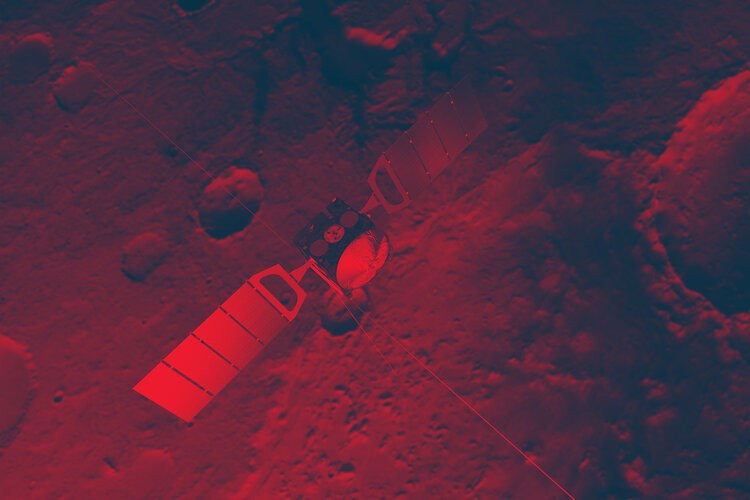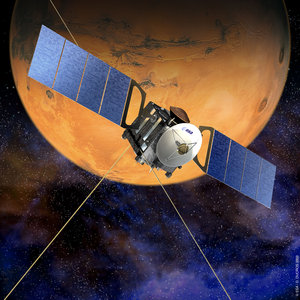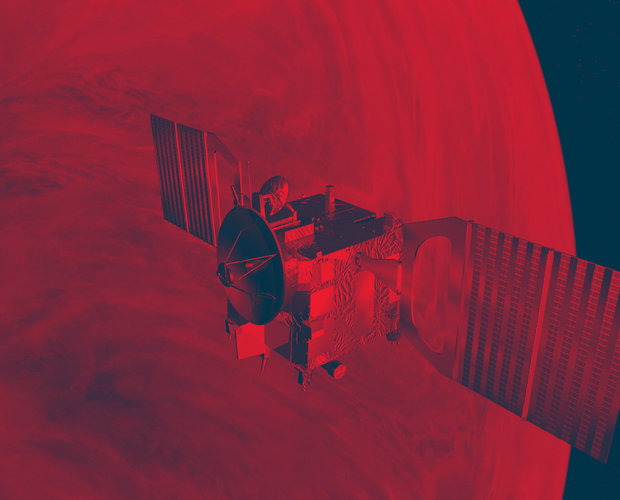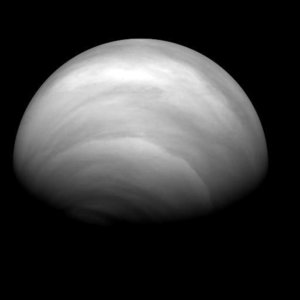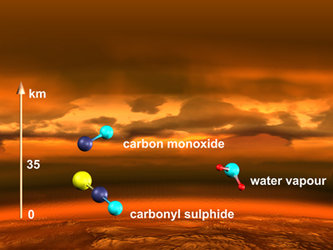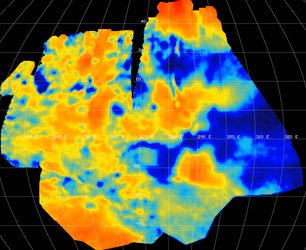Mars and Venus are surprisingly similar
Using two ESA spacecraft, planetary scientists are watching the atmospheres of Mars and Venus being stripped away into space. The simultaneous observations by Mars Express and Venus Express give scientists the data they need to investigate the evolution of the two planets’ atmospheres.
Scientists call this work comparative planetology. Mars Express and Venus Express are so good at it because they carry very similar science instruments. In the case of the Analyser of Space Plasmas and Energetic Atoms (ASPERA), they are virtually identical. This allows scientists to make direct comparisons between the two planets.
The new results probe directly into the magnetic regions behind the planets, which are the predominant channels through which electrically-charged particles escape. They also present the first detection of whole atoms escaping from the atmosphere of Venus, and show that the rate of escape rose by ten times on Mars when a solar storm struck in December 2006.
By observing the current rates of loss of the two atmospheres, planetary scientists hope that they will be able to turn back the clock and understand what they were like in the past. “These results give us the potential to measure the evolution of planetary climates,” says David Brain, Supporting Investigator for plasma physics for Venus Express and Co-Investigator for ASPERA on Mars and Venus Express at the University of California, Berkeley.

The new observations show that, despite the differences in size and distance from the Sun, Mars and Venus are surprisingly similar. Both planets have beams of electrically charged particles flowing out of their atmospheres. The particles are being accelerated away by interactions with the solar wind, a constant stream of electrically charged particles released by the Sun.
At Earth, the solar wind does not directly interact with the atmosphere. It is diverted by Earth’s natural cloak of magnetism. Neither Mars nor Venus have appreciable magnetic fields generated inside the planet, so each planet’s atmosphere suffers the full impact of the solar wind.
Interestingly, this full-on interaction does create a weak magnetic field that drapes itself around each planet and stretches out behind the night-side in a long tail. Venus’s atmosphere is thick and dense, whereas that of Mars is light and tenuous. Despite the differences, the magnetometer instruments have discovered that the structure of the magnetic fields of both planets are alike.
“This is because the density of the ionosphere at 250 km altitude is surprisingly similar,” says Tielong Zhang, Principal Investigator for the Venus Express magnetometer instrument at Institut für Weltraumforschung (IWF), Österreiche Akademie der Wissenschaften, Austria. The ionosphere is the surrounding shell of electrically-charged particles created by the impact of sunlight on the planet’s upper atmosphere.

The proximity of Venus to the Sun does create an important difference, however. The solar wind thins out as it moves through space so the closer to the Sun it is encountered, the more concentrated is its force. This creates a stronger magnetic field, making the escaping atmospheric particles move collectively like a fluid.
At Mars, the weaker field means that the escaping particles act as individuals. “This is a fundamental difference between the two planets,” says Stas Barabash, ASPERA Principal Investigator on both Mars Express and Venus Express, Swedish Institute of Space Physics.
Another illuminating difference between Mars and Venus is that Mars displays strong small-scale magnetic fields locked into the crust of the planet. In some regions, these pockets protect the atmosphere, in others they actually help funnel the atmosphere into space.
The complexity of the different processes revealed at Venus and Mars means that planetary scientists do not yet have the full picture. “There will be many more results to come,” says Barabash.
There is a lot to do because there are many different mechanisms that may cause the atmospheric particles to escape. Untangling it all will take time. “The longer the spacecraft work together, the longer we can watch and see what really happens,” says Brain.
Notes for Editors:
These new results are presented in 19 papers to be published in a special issue of the journal Planetary and Space Science. Some out of these have been available online from 19 January 2008.
For more information:
Stanislav Barabash, Swedish Institute of Space Physics
Email: Stas @ irf.se
Tielong Zhang, Institut für Weltraumforschung (IWF), Österreiche Akademie der Wissenschaften, Austria
Email: Tielong.Zhang @ oeaw.ac.at
Håkan Svedhem, ESA Venus Express Project Scientist
Email: Hakan.Svedhem @ esa.int
Agustin Chicarro, ESA Mars Express Project Scientist
Email: Agustin.Chicarro @ esa.int
David Brain, University of California, Berkeley, USA
Email: Brain @ ssl.berkeley.edu










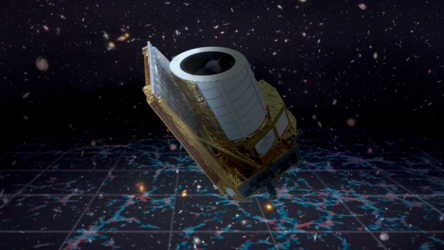




 Germany
Germany
 Austria
Austria
 Belgium
Belgium
 Denmark
Denmark
 Spain
Spain
 Estonia
Estonia
 Finland
Finland
 France
France
 Greece
Greece
 Hungary
Hungary
 Ireland
Ireland
 Italy
Italy
 Luxembourg
Luxembourg
 Norway
Norway
 The Netherlands
The Netherlands
 Poland
Poland
 Portugal
Portugal
 Czechia
Czechia
 Romania
Romania
 United Kingdom
United Kingdom
 Slovenia
Slovenia
 Sweden
Sweden
 Switzerland
Switzerland


























